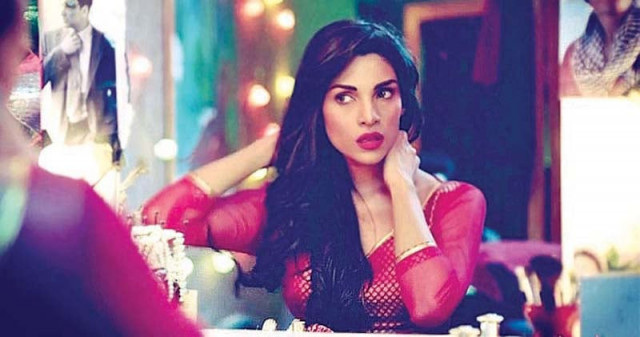Countering obscenity with creativity
On World Dance Day, we look at the second coming of choreographers in the city’s commercial theatre

Lately, item numbers, such as Zhalay Sarhadi’s ‘Jawani’, have become a common feature of Pakistani films. PHOTO: PUBLICITY
From the dancing girl of Mohenjo Daro to dedicated item numbers in Pakistani films, dance has a serious connection with the expression of sub-continent. Often looked down upon as a craft, it has faced its share of glory and infamy in Pakistan. There was a time when Lollywood favoured female actors who could dance well. The most sought-after names were Reema, Meera, Saima and Sahiba, all hired choreographers in order to learn and impress viewers with their dancing skills. But this all ended with the end of the Lahore film industry.
However, commercial theatre, often referred to as ‘a boy’s night out’ by most critics, has now taken the driving seat. Theatre plays, across Punjab, are incomplete without dance performances and a stage actor with considerable dancing skills gets paid better than many of the senior and seasoned actors, who were once also a part of the Punjabi film industry.

Speaking to The Express Tribune, Chaudhry Zulfiqar Ahmed, Commercial Theatre Producers Association chairperson said, “It is said that dance is the hidden language of soul. That’s why it is practiced in commercial theatres of Lahore these days. You can say, these are the golden days of theatre in terms of revenue generation. We have won back our audience which we had lost a few years back.”
As soon as the film actors, especially Nargis, Mehga and Dedar, started performing in theatres, producers started to earn more just on the basis of their dance performances. He noted that the theatres are drawing a good business and dances are being appreciated by the audience. “People call it vulgar but they don’t come to watch it. Obscenity has been overcome to a great extent in commercial theatre.”
“A lot of choreographers, who were left unemployed, are now employed due to its revival as many female actors and extras get to perform on different songs,” he added.
There are five private theatres in Lahore including, Alfalah, Naz, Mehfil, Tamaseel and Shalimar theatre. Dance performances are featured in all them. In addition to that, Alhamra Arts Council also presents theatre plays.
Nowadays, almost seven to eight songs are selected for dance performances in plays. “You may say that the plays lack story but tickets of a commercial theatre are sold between Rs150 and Rs4,000, which is many times higher as compared to those of films. This means that the theatre-goers have their own taste and they like watching dances. Many famous film stars have in the past worked in commercial theatre of Lahore,” said Ahmed.
To mark this day, Lahore Arts Council in collaboration with Pakistan National Council of Arts is holding an event today at alHamra Hall.
Published in The Express Tribune, April 29th, 2015.
Like Life & Style on Facebook, follow @ETLifeandStyle on Twitter for the latest in fashion, gossip and entertainment.



















COMMENTS
Comments are moderated and generally will be posted if they are on-topic and not abusive.
For more information, please see our Comments FAQ